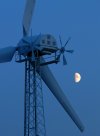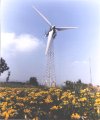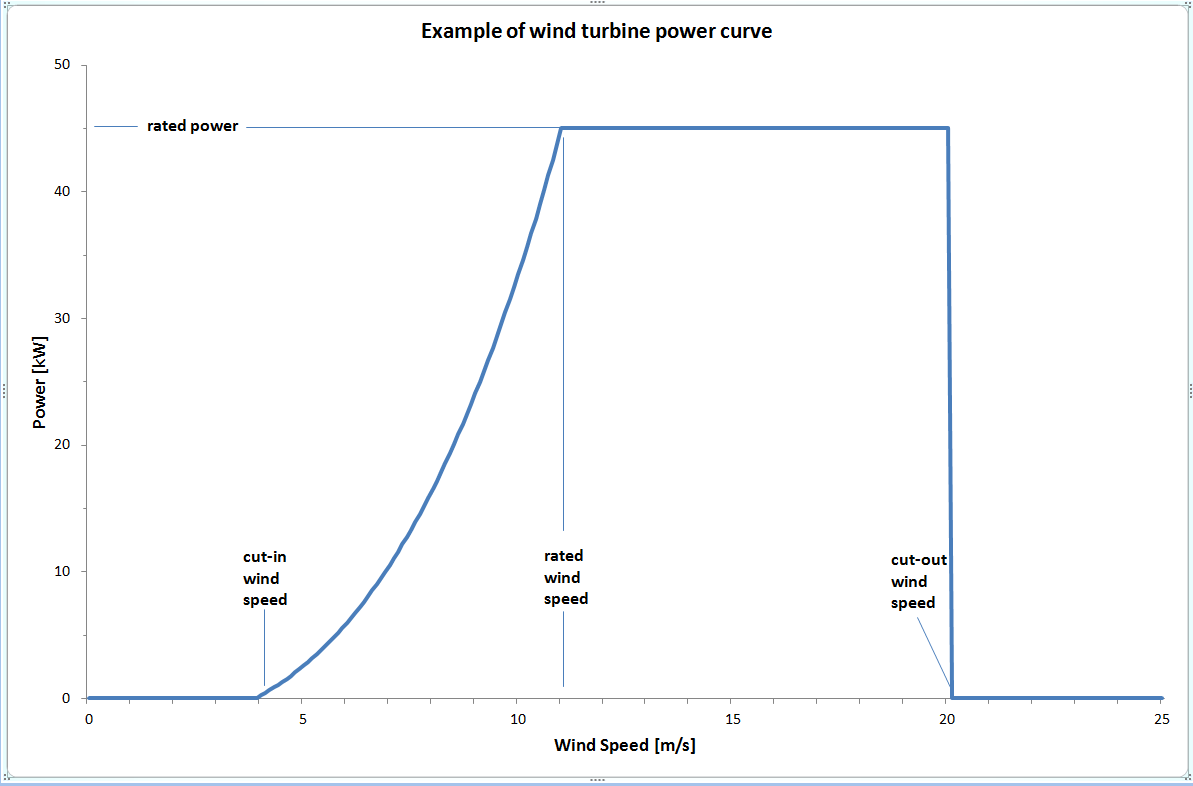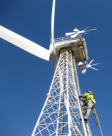STFC Home

| Home >All Instruments |
| Energy Research Unit Meteorological Data |
|
Wind Turbine
Windharvester has been decommissioned after many years of faithful service. A new wind turbine will be arriving soon. A few facts about the “Windharvester” turbine
By modern standards the RAL Windharvester turbine is small being rated at 45 kW (the turbines being installed at UK wind farms are rated at upto 5000 kW !), and having a hub height of 15.5 metres. The turbine has three blades (made of GRP (glass fibre reinforced polymer) which are fixed pitch (i.e. the blade angle is not varied during operation) and installed upwind of the tower – the blade diameter is 17 metres. The machine is turned (yawed) into the wind by a simple drive system using fantails. The output power of a wind turbine depends on wind speed, and a typical power curve is shown below. With increasing wind speed, significant points on the curve are the cut-in wind speed (usually around 4 m/s, at which the wind turbine starts to generate), the rated wind speed (beyond which the output power is regulated to the rated power), and the cut-out wind speed (at which the wind turbine is shut down for safety and to avoid excessive stress). Up until the end of 2011 the wind turbine has generated a total of 397,266 kWh over a 21-year period. This energy has been fed into the RAL grid, and is equivalent to the amount of electrical energy used by four typical UK households over this 21 year period. However, the wind turbine does not generate power all time - as well as during periods of low wind speed, it is sometimes shut down for experimental instrumentation purposes, and of course for routine maintenance. |
 |
www.eru.rl.ac.uk Energy Research Unit Rutherford Appleton Laboratory Science & Technology Facilities Council |

 The turbine was erected at the ERU Test Site
in 1990, having been purchased as a small commercial machine from
Windharvester Ltd. Other Windharvester turbines were installed at the
Earth Balance Centre in Northumberland, and on remote communities such
as
The turbine was erected at the ERU Test Site
in 1990, having been purchased as a small commercial machine from
Windharvester Ltd. Other Windharvester turbines were installed at the
Earth Balance Centre in Northumberland, and on remote communities such
as 
 The
turbine, which is connected into the RAL electricity system, was
used for many years in university-based R&D projects including
wind/diesel systems, condition monitoring of wind turbines,
electro-dynamic braking, advanced aerodynamics of wind turbine blades.
It was overhauled and had many components replaced in 2001/2002. Since
July 2002 it has largely been used to generate power into the RAL Grid.
The
turbine, which is connected into the RAL electricity system, was
used for many years in university-based R&D projects including
wind/diesel systems, condition monitoring of wind turbines,
electro-dynamic braking, advanced aerodynamics of wind turbine blades.
It was overhauled and had many components replaced in 2001/2002. Since
July 2002 it has largely been used to generate power into the RAL Grid.